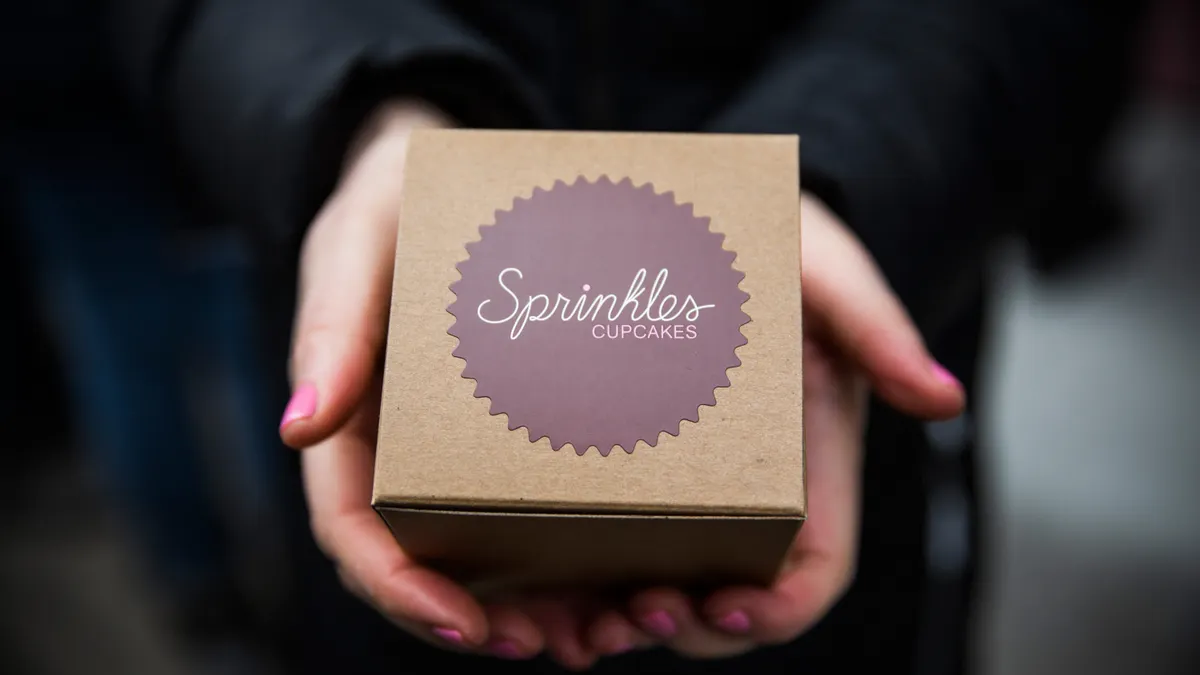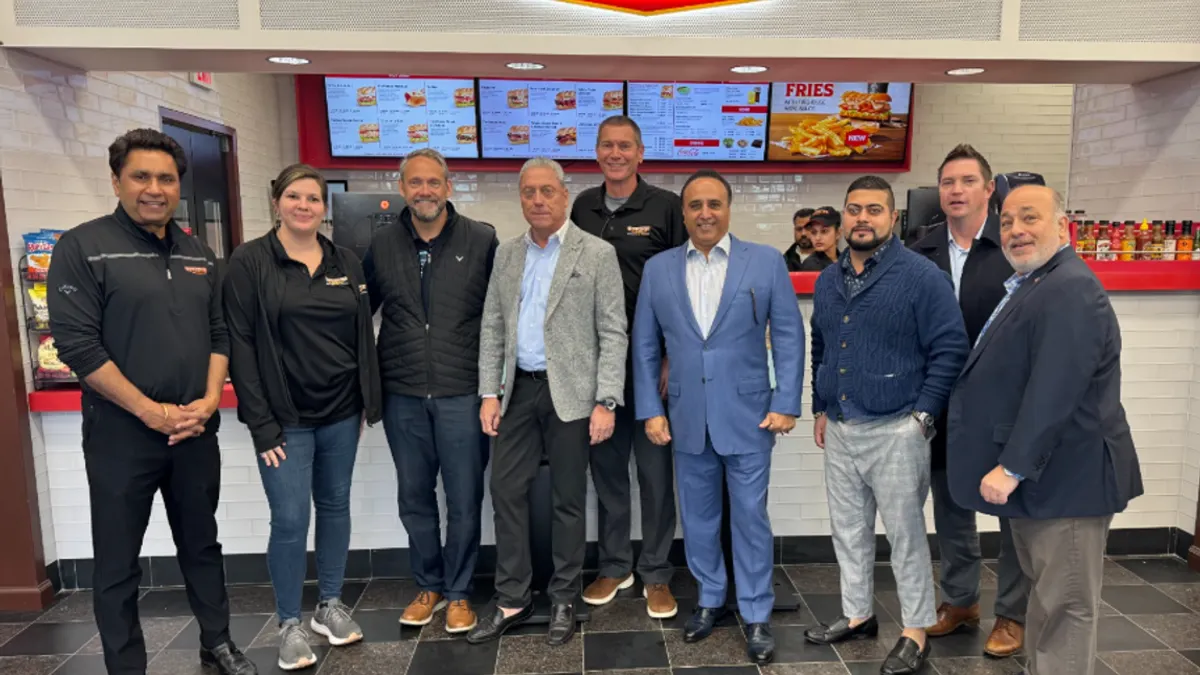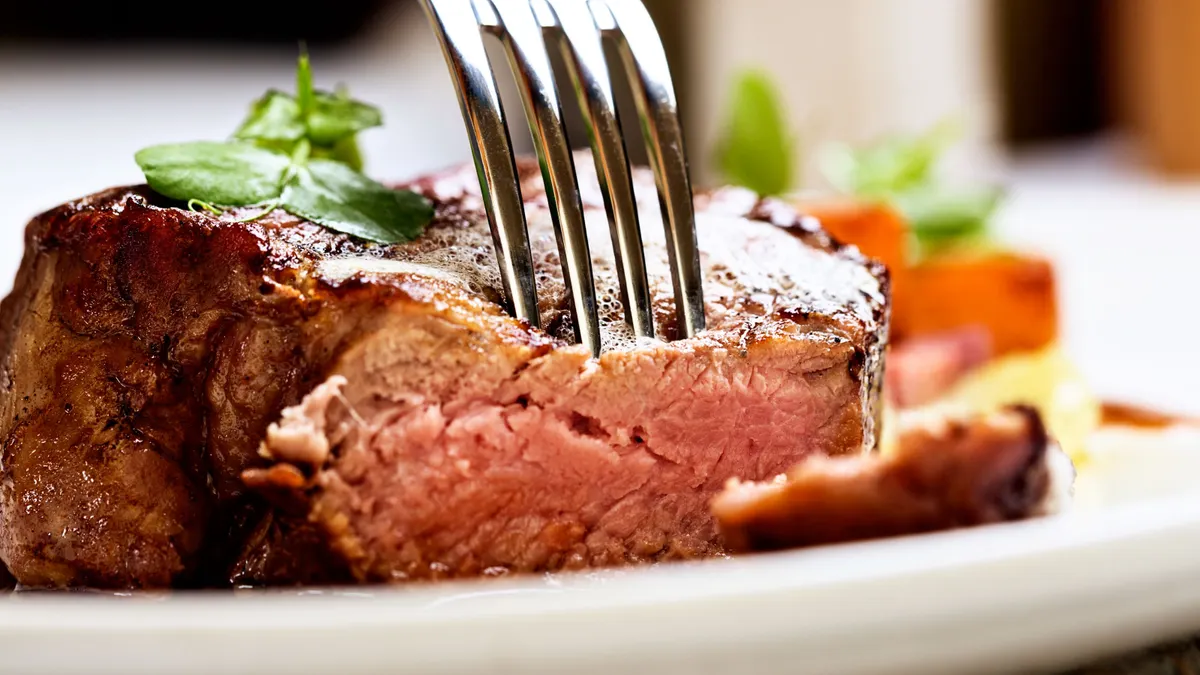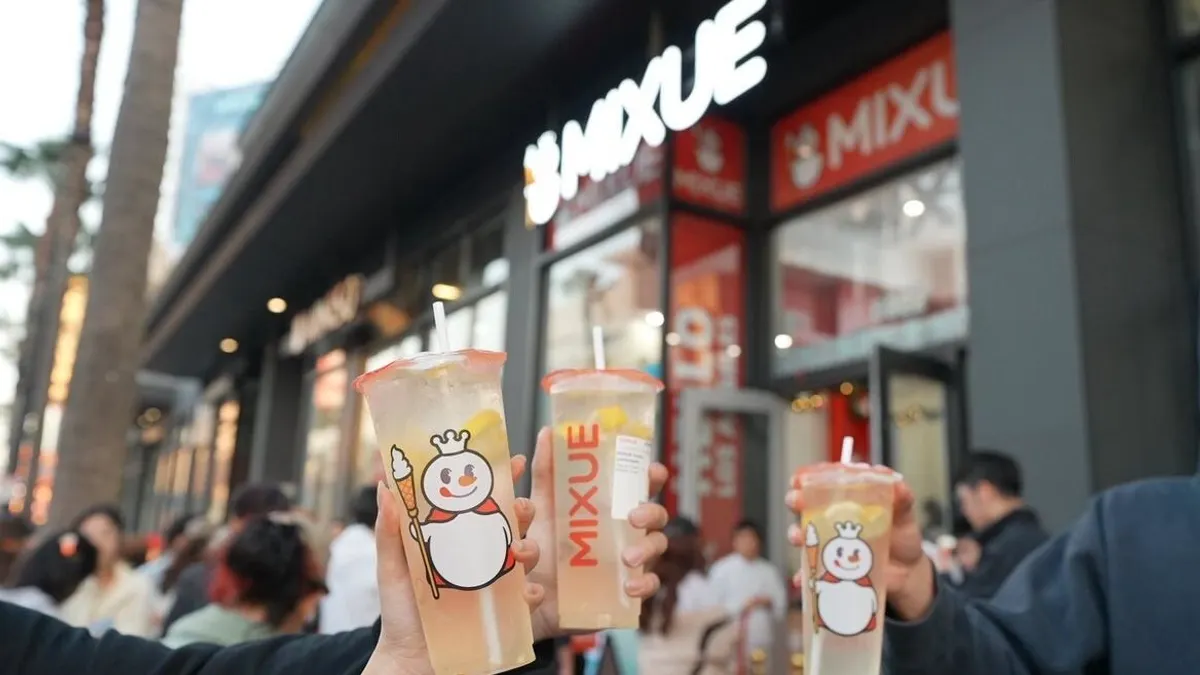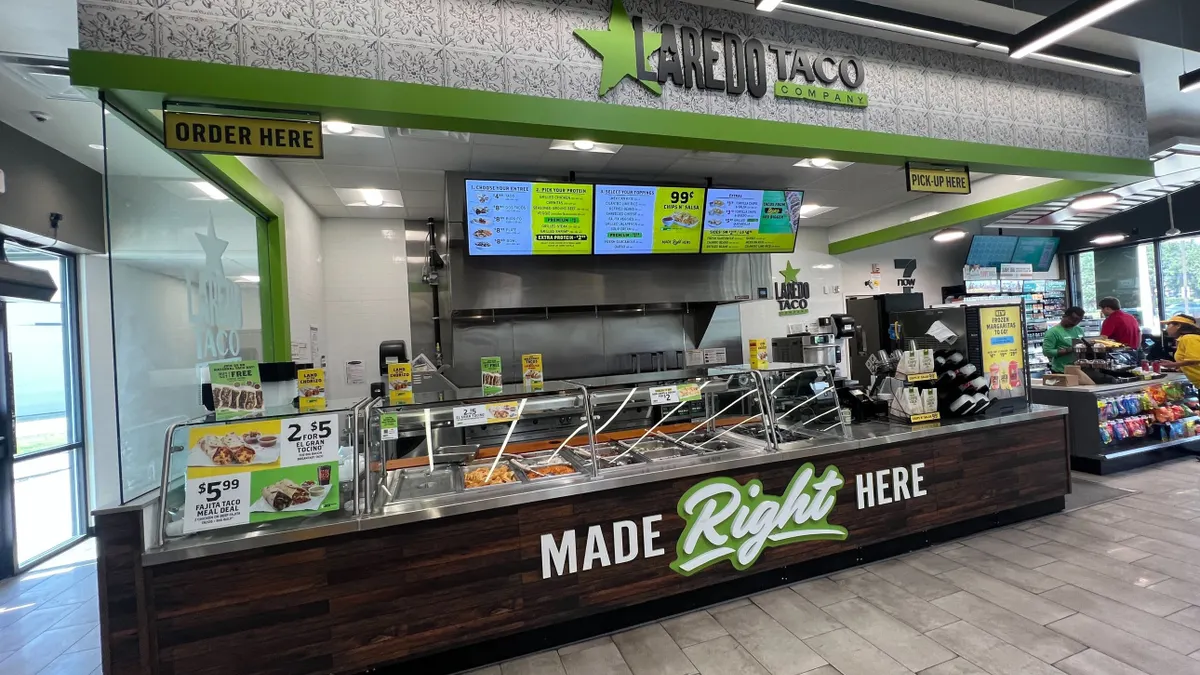ORLANDO, Florida — Punch Bowl Social wants to entice its millennial customers to stay a while, and not just by flexing its food and upscale arcade. By 2022, the eatertainment chain could open its first hotel.
This pivot into hospitality is part of Punch Bowl’s bid to become a lifestyle brand, CEO Robert Thompson told Restaurant Dive at the ICR conference Tuesday.
“Our hotel piece is a manifestation of our lifestyle aspirations,” he said. “It’s a hotel on top of a Punch Bowl Social.”
The hotel would be designed for the millennial demographic, which is less interested in large format rooms and luxurious experiences, he said. Instead, Punch Bowl wants to create a micro-unit hotel with economical rooms that are designed to push guests into common areas where Punch Bowl Social will be.
“Our approach to the world is to be the master brand, similar to the approach that Virgin did in the ‘80s and ‘90s as the master brand with opportunities to make natural pivots into other lanes,” he said. “If there was a Punch Bowl Cruise 20 years from now, I wouldn’t be surprised.”
While he has several potential hotel deals in the works, including one in Punch Bowl Social’s hometown of Denver, the chain is also looking at key urban markets for its hotels.
In addition to its hotel aspirations, the company is expanding into high-end malls with a new concept called Punch Bowl Life. The brand variant will offer more gaming and master classes for cooking, cocktails, personal fashion, candlemaking and a “Not another needle point” class. These classes would also dovetail with the retail products available, he said.
While Punch Bowl Social formats have eight bowling lanes and two private karaoke rooms, Punch Bowl Life will have 12 to 14 lanes and four private karaoke rooms, Thompson said. The menus will be similar at both brands. Punch Bowl Life hasn’t launched yet, but could be up and running by 2021, he said.
Expanding entertainment, menu offerings
As it works to establish itself as a lifestyle brand, Punch Bowl is also bulking up and revising its in-store entertainment. The company is testing dart flight technology that launches in Denver this month, Thompson said. The steel-tipped darts have technology in them to track the dart and guests can more easily keep score through an interactive interface, he said. Instead of having to give away darts, it can charge $25 per hour for guests to throw darts in a dart ally. It’s also testing Partee, a small format putting green, at its Dallas location, he said.
In addition, the company is rolling out a podcast studio so podcasters come in and do recordings or go live at Punch Bowl Social. This will also give corporate teams the ability to record messages to present during a company celebration, he said.
While offering additional entertainment elements is a key component to its design, it’s not a huge focus for the company’s sale metrics. Eight-night percent of its sales come from food and beverages, with 11% coming from games, Thompson said during a conference presentation. Punch Bowl’s food is made in a scratch kitchen and there is a strong emphasis on shareables, he said.
It’s developed a robust beverage program with craft cocktails and non-alcoholic drinks, and rolled out a milkshake lab last year that serves up over-the-top desserts. Punch Bowl redesigned part of one of its bars so guests can see elaborate milkshakes being made and interact with the milkshake prep cook, Thompson said. To order, guests look at images of milkshakes through a vintage viewfinder.
“We think it’s exciting for Gen Z folks,” Thompson said. “But I don’t know about you. I enjoy a 1,900 calorie milkshake from time to time as well.”
It makes sense that the company is pushing for more elements that appeal to millennials and Gen Z. After reviewing credit card data, the company found that the median age of its customer is 33 and 66% of its customers are under the age of 40. But while this demographic has been big on off-premise and delivery, don’t expect Punch Bowl Social to provide this channel.
“It’s not for us,” Thompson said. “We’re the antidote to Amazon and the Uber Eats of the world. Our guests come to us for an experience. You can’t deliver experiences.”
Focusing on younger demographics and sticking to its in-store entertainment and food and beverage program is paying off — Punch Bowl has reached $128 million in run rate revenue according to Thompson’s ICR presentation. It also plans to grow its 19-unit network with six new locations in development this year.
The eatertainment chain plans to be more aggressive with its growth in 2021, but construction cost inflation is becoming a big inhibitor, Thompson said. Punch Bowl focuses on areas of dense multifamily housing that tend to have a heavy millennial population, but are also within areas close to a large daytime population. The residential traffic is beneficial for its Saturday and Sunday brunches, he said. Each Punch Bowl Social is also uniquely designed to capture a local story, and the chain includes mountain lodge, industrial and Victorian-inspired concepts.
Apart from its unique design, it’s competing with all the other fast-growing eatertainment brands like Top Golf by focusing on its food element, while the main driver might be for the games at its competitors.
“A majority of our guests come to eat and drink,” he said.






